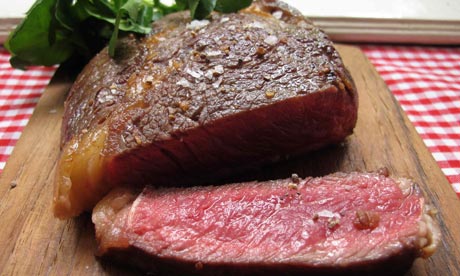How to Cook Steak, Paleo Style

Spring marks the start of warm weather, a welcome relief as the cold months of winter begin to fade away.
This means it’s time to fire up the barbecue and get those sizzling steaks ready for a protein-packed feast.
Frequently we are asked to share our advice for the best method for cooking meat, especially beef or bison steaks.
First, we want you to know that there are many great ways to prepare and cook this Paleo staple.
Individual tastes and preferences should always be taken into consideration when planning a meal.
While there isn’t a right or wrong way to cook a steak, there are certain choices to be made for the health-conscious to ensure that your end result is not only delicious but good for you too.
The first step in this dining adventure is a trip to the grocery store.
Be sure to select organic, grass-fed beef or bison.
This will ensure that you are aligning your animal protein as close to that of our ancestors as possible.
Once home, wash the steak with warm water and marinade in the fridge for at least 12 hours.
There are many delicious and savory marinades that enhance the flavors of beef or bison.
Take your pick and enjoy the delectable and savory results!
Once your steaks are infused with exquisite, flavor-enhancing spices and juices, you are ready for cooking.
The most important consideration is choosing the healthiest cooking method. If barbecuing is your preference, a gas unit rather than a charcoal unit will be the best choice.
Oven broiling works well but tends to result in a more challenging cleanup once the steaks are done.
You may prefer cooking your steak on the stove in a pan, which can be done with a small amount of olive oil, or with leftover marinade covering the surface of the pan.
Most importantly, however, when you choose to cook your meat, keep in mind this crucial rule of thumb: Meat should be cooked slowly, at low temperatures.
Cooking meats at high temperatures results in the production of Advanced Glycation End-Product (AGE).
Basically, the beautiful, organic, grass-fed steak you so carefully prepare, becomes a potentially harmful protein source if cooked quickly.
Cook “Slow and Low” and avoid overcooking.
Keep meat a bit on the rare side with no charring on the outside. This will ensure a wonderfully healthy outcome for your dining experience.
All the best,
Lorrie Cordain, M.Ed., Co-Author of The Paleo Diet Cookbook